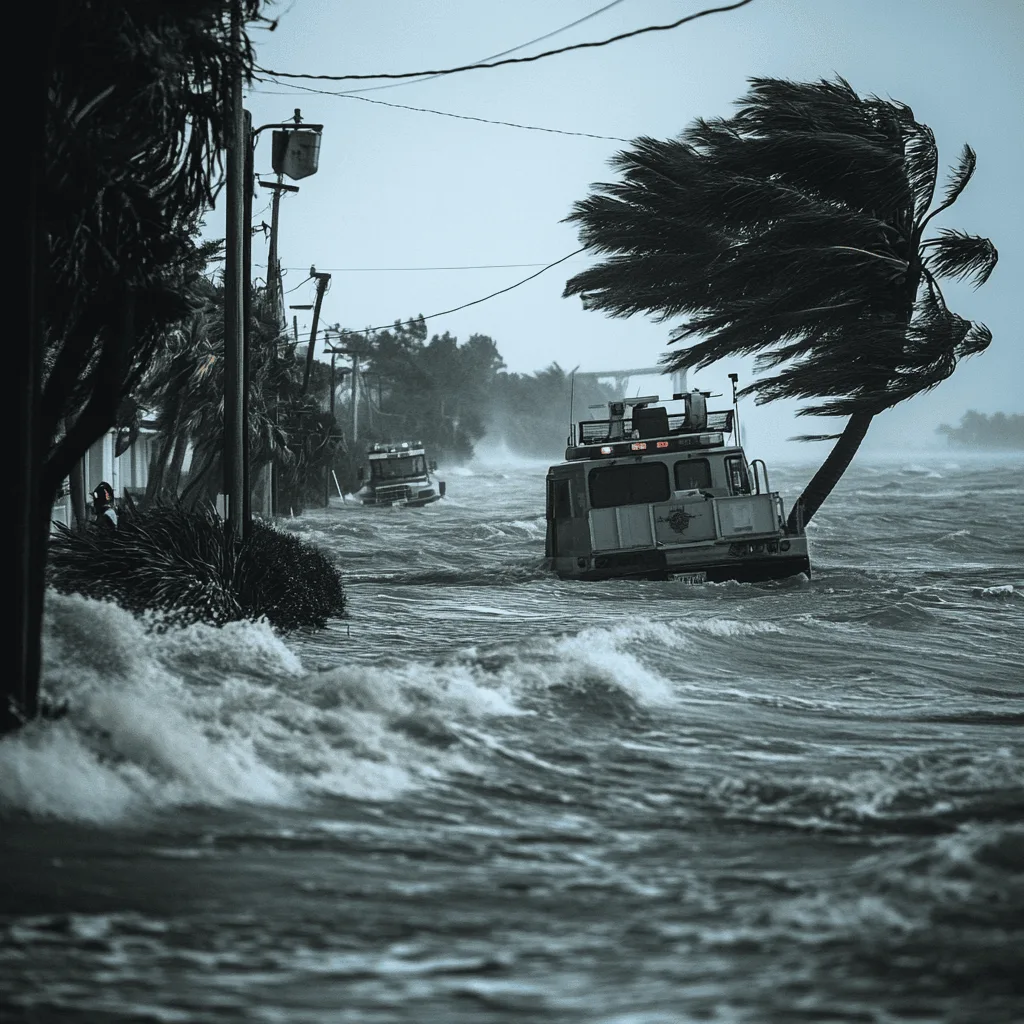
A Public Information Officer (PIO) coordinates, curates, and monitors information flowing out from an agency or group of agencies, and flowing in from external media sources and the community.
What is a Public Information Officer?
A Public Information Officer (PIO) is essentially an organization’s spokesperson. They handle the flow of information going out to the general public, news media, and sometimes even other organizations.
Additionally, they monitor media and community communications channels to maintain awareness and support rumor control. In short, a PIO is the bridge between an organization and the outside world, ensuring smooth and transparent communication.
What Does a Public Information Officer Do?
Public Information Officers (PIOs) are communication specialists who primarily focus on managing the flow of information between an organization and its external audiences.
Proactive Communication
- Strategic communication. PIOs collaborate with leadership to develop communication plans and craft messages that align with the organization’s goals. This involves creating public relations campaigns, press releases, speeches, and social media content to keep the general public informed about the organization’s activities, initiatives, and achievements. During an emergency, PIOs are a critical part of the Incident Management Team, charged with ensuring that the community has timely and accurate information.
- Public awareness. They play a role in public education and awareness campaigns to inform the public about important issues or programs.
- Media relations. PIOs build relationships with journalists and reporters, acting as the organization’s primary contact for media inquiries. They provide accurate and timely information to facilitate positive media coverage.
- Media Monitoring. PIOs monitor media and other sources of public information and ensure that relevant information is communicated to relevant stakeholders within an agency or organization.
Coordinate Communication
During critical incidents such as planned events, emergencies, disasters, and controversies, PIOs take the lead in managing crisis communication.
They are responsible for providing clear, consistent, and timely information to the public, and support distribution of emergency preparedness materials. This helps to control rumors and anxieties and maintain public trust.
While PIOs primarily handle external communication, their role can sometimes involve internal communication as well. They might inform employees about company news or policies, but their main focus remains on strategies and messages directed at the outside world.
What Qualifications Does a Public Information Officer Need to Be Successful?
Public information officers (PIOs) act as the liaison between organizations and the public. To be successful, they need a combination of educational background, experience, and skills.
Education
To become a PIO, a bachelor’s degree in communications, public relations, journalism, or a related field is typically required. A bachelor’s degree is required to provide a strong foundation in communication theory, media relations, and crisis communication.
Experience/Training
Prior experience in public relations or a communications role is often preferred by employers. This experience could come from internships, entry-level PR positions, or work in journalism. Government specific PIO training is available through many state emergency management departments and FEMA.
Skills
- Communication: Exceptional written and verbal communication skills are essential. PIOs need to be able to create clear, concise, and compelling messages for various audiences.
- Media relations: Understanding the media landscape, including traditional and social media, is crucial. PIOs should be adept at building relationships with journalists and pitching stories.
- Strong digital literacy: Strong digital literacy and a deep understanding of social media platforms are necessary for reaching the public and managing online reputation.
- Interpersonal skills: The ability to build rapport and work effectively with people from diverse backgrounds is key. PIOs often interact with media representatives, local government officials, and the public.
- Organization and time management: PIOs juggle multiple tasks and deadlines. Excellent organizational skills and the ability to prioritize effectively are essential.
- Problem-solving skills: Public information work can be fast-paced and unpredictable. PIOs need to be resourceful and think critically to address challenges and crises.
- Technical skills: Proficiency in content management systems, media editing tools, and social media analytics can be beneficial.
- Understanding of law: For some PIO roles, a foundational knowledge of media law and freedom of information acts can be helpful, especially when dealing with sensitive or confidential information.
Public Information Officer (PIO) Key Duties and Responsibilities
Effective communication is the cornerstone of credibility and trust in both the public and private sectors. PIOs are a critical link in the communications chain between the organizations that they serve and their constituents.
Media Relations
- Building relationships: PIOs establish and maintain strong relationships with journalists, editors, and media outlets. This involves regular communication, pitching stories, and providing timely and accurate information.
- Press releases and media briefings: Drafting and distributing newsworthy press releases, organizing press conferences, and conducting media briefings to share information and answer questions.
- Media monitoring: Proactively tracking media coverage of the organization, identifying trends, and addressing any negative publicity.
Crisis Communication
- Developing plans: Creating crisis communication plans that outline procedures for information dissemination during emergencies or negative events.
- Serving as spokesperson: Acting as the organization’s official spokesperson during crisis situations, providing clear and accurate information to the public.
- Managing public perception: Working to mitigate negative impacts and maintain the organization’s reputation during a crisis.
Public Information Dissemination
- Content creation: Developing and distributing various communication materials, such as press releases, brochures, social media posts, and website content, to keep the public informed.
- Public outreach: Organizing and participating in public events, community forums, and town hall meetings to connect with the public and address their concerns.
- Transparency and accuracy: Ensuring information released to the public is accurate, transparent, and delivered in a timely manner.
Internal Communications
- Keeping staff informed: Communicating with staff about organizational policies, procedures, and important updates to maintain a sense of transparency and unity.
- Managing internal communication channels: Establishing and managing internal communication channels, such as newsletters or intranet platforms, to keep employees informed.
Training and Preparedness
- Media training: Providing media training to spokespersons and other staff to ensure they can effectively communicate with the media during interviews or press conferences.
- Crisis communication drills: Conducting drills and simulations to prepare staff for crisis situations and ensure a coordinated response.
How PIOs Must React in the Event of State or Local Emergency
In the face of a state or local emergency, PIOs become crucial figures for ensuring public safety and maintaining order. Here’s how public information officers must react during such events:
Taking Immediate Action
- Situational awareness: Public information officers need to gather all available information about the emergency. This includes the nature of the threat, affected areas, ongoing response efforts, and any official instructions for the public.
- Activate emergency communication plan: The pre-established emergency communication plan should be immediately activated. This plan outlines communication protocols, designated spokespersons, and the channels to be used for disseminating information.
Developing a Communication Strategy
- Clear and concise messaging: Develop clear, concise, and factual messages for the public. Avoid technical jargon and focus on providing actionable information that ensures public safety and peace of mind.
- Multiple channels: Utilize various communication channels to reach a wide audience. This may include press releases, media briefings, social media updates, emergency alert systems, and the organization’s website.
- Regular updates: Provide frequent updates as the situation evolves. This helps to manage public anxiety and ensures everyone has access to the latest information.
Accuracy and Transparency
- Verify Information: Double-check all information before releasing it to the public. Spreading misinformation during a crisis can be dangerous and damage public trust.
- Be as transparent as possible: Be transparent, but keep sensitive information confidential.
Maintaining Calm and Public Trust
- Communicate with empathy: Acknowledge the seriousness of the situation while conveying a sense of calm and control.
- Humanize the response: Showcase the ongoing response efforts by first responders and relevant authorities. This helps build public trust and confidence.
- Internal coordination: Maintain open communication channels within the organization to ensure everyone has consistent information.
- Liaison with authorities: Work closely with emergency operations teams to understand the situation and relay accurate information to the public.
What Technology Tools Help PIOs Do Their Job?
- Emergency evacuation software supports the dissemination of accurate real-time information with public safety stakeholders and the greater community.
- Mass notification systems help public information officers blast alerts via text, email, social media, and digital signs.
- Media monitoring tools help PIOs track news mentions and identify potential stories.
- Content management systems are used to easily create and publish press releases and website updates.
- Social media management platforms are utilized to schedule posts, engage with followers, and monitor online conversations.
- Crisis communication software facilitates secure information sharing within the organization during emergencies.
These tools help public information officers disseminate information, manage media relations, and keep the public informed.
Are Public Information Officers in High Demand?
The U.S. Bureau of Labor Statistics (BLS) projects a growth rate of 6% for public relations specialists (which includes PIOs) from 2022 to 2032, faster than the average for all occupations. This translates to roughly 25,800 job openings each year. Many organizations, from government agencies and nonprofits to corporations, require clear and effective communication with the public.
The increasing importance of crisis communication, social media engagement, and public transparency is likely to keep demand for PIOs strong. As organizations navigate complex issues and an ever-changing media landscape, the ability to manage information effectively will remain valuable.
How Can Perimeter Help Public Information Officers?
Clear and timely communication is paramount in the high-pressure environment of a crisis. Public information officers (PIOs) carry a heavy burden of ensuring the public receives accurate information and acts accordingly. Don’t let outdated communication tools hinder your ability to keep citizens safe.
Perimeter Platform can be a game-changer for PIOs by:
- Simplifying evacuation messaging: Perimeter’s clear map-based interface allows PIOs to easily define evacuation zones and share them with the public. Our emergency mapping software fosters understanding and reduces confusion during emergencies.
- Facilitating real-time information sharing: The platform facilitates seamless information sharing with emergency responders and the public. PIOs can use Perimeter to share crucial updates, maps, and resources, keeping everyone informed.
- Enabling pre-incident planning: Uploading pre-defined disaster response resources saves valuable time during a crisis. PIOs can leverage Perimeter’s pre-planning capabilities to ensure a more coordinated response.
Perimeter’s open design allows bidirectional integration with existing communication tools, further streamlining information flow. Easy deployment ensures the platform can be operational within hours, which is a critical factor in the event of an emergency.
Stop waiting for the next disaster to strike. Book a demo today and see how Perimeter can become your trusted partner in evacuation management.
Resources:
- https://onlinewilder.vcu.edu/blog/public-information-officer/
- https://www.indeed.com/career-advice/finding-a-job/what-is-public-information-officer
- https://www.ravemobilesafety.com/blog/role-public-information-officer-pio/
- https://www.gcu.edu/blog/language-communication/public-information-officer-career-job-description
- https://www.escribemeetings.com/blog/public-information-officer/


 Perimeter Staff – March 18, 2024
Perimeter Staff – March 18, 2024 


